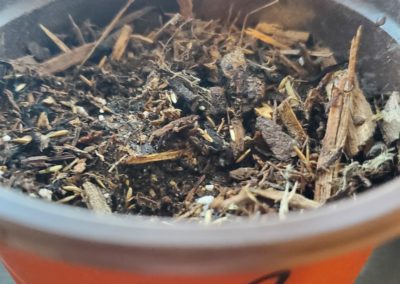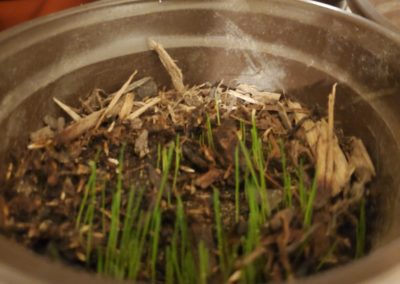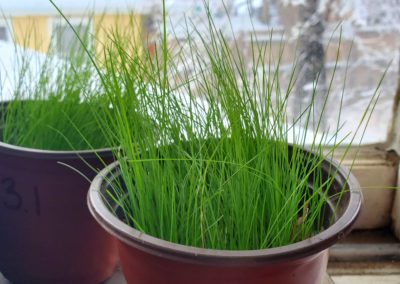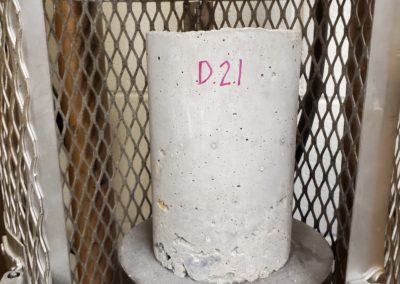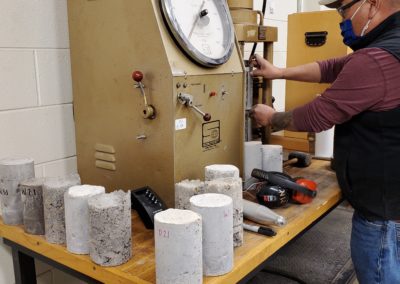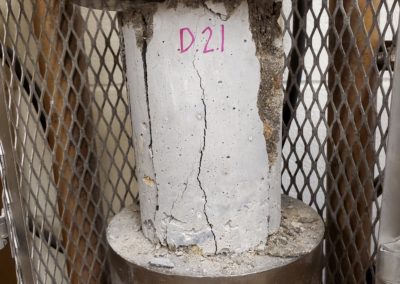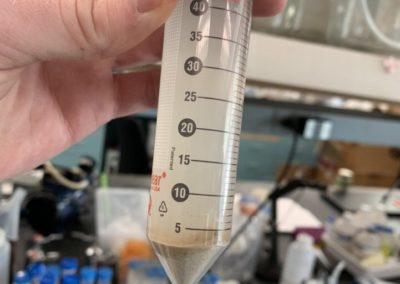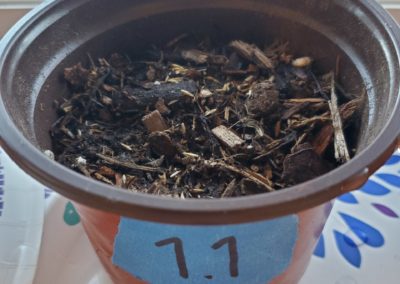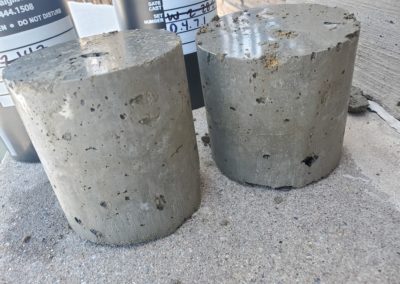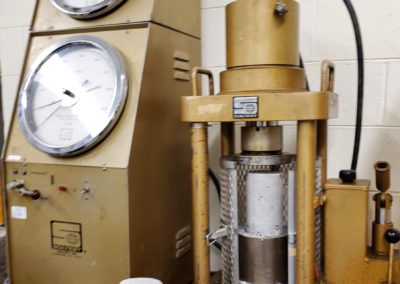No Tailings Attached
Overview
Mining is necessary to meet the demands of an industrialized society. However, mining activities can produce large waste streams such as mine tailings which are the result of ore processing. Mine tailings can come in a variety of forms and tailing storage facilities require ongoing care and maintenance which is expensive and time-consuming. Additionally, there is a risk of failure with these structures which can pose a threat to human and environmental health. Due to the issues associated with tailings, it is becoming more common to re-think tailings management and whether or not tailings could be recycled and repurposed. Finding alternatives for current tailings management could reduce risk, save money, and potentially result in a new area of profit. Students in the Colorado School of Mines Capstone Design Program took on this challenge, forming the team No Tailings Attached.

Video
Live Zoom Chat
Use the button below to join us live from 8:00 – 10:30 a.m. on April 29, 2021.
Please use passcode: capstone
Or iPhone one-tap: 13462487799,95482580567# or 16699006833,95482580567#
Or Telephone:
Dial: +1 346 248 7799 (US Toll) (US Toll) or +1 669 900 6833 (US Toll) (US Toll)
Meeting ID: 954 8258 0567
Team Members
- Zach Archibald
- Jessica DiCaprio
- Wyatt Ellison
- Abdulla Ermila
- Ashley Grob
The Client
- Nevada Gold Mines
Acknowledgements
Kaity Bullock
Dr. Robin Bullock
Dr. Jim Ranville
Prof. Bruce Yoshioka
Dr. Lori Tunstall
The Mechanical Dewatering Capstone Team
Thank you all for your support!
Elevator Pitch
Mine tailings represent one of the greatest current challenges in the mining industry as they can present both a safety and environmental hazard to mine locations. In this project, the team was tasked with finding a beneficial way to reuse mine tailings. The reuse solution should be at a lower risk and cost than current tailings facilities. The team spent the first semester researching existing tailings reuse options. The options include fertilizer, drilling mud, sea barriers, concrete, cat litter, and phytoremediation/phytostabilization.
Following research, the team designed, developed and tested two product solutions selected based on viability, cost and effectiveness: concrete and fertilizer. Tailings were incorporated into concrete samples which underwent compressive strength tests to identify if mixtures could be used in structural or aesthetic applications. The team found that tailings had a slight impact on the compressive strength of concrete, but one of the mixes tested could be used for structural applications because its strength was consistently over 3000 psi which meets the American Society for Testing and Materials (ASTM) standard of 2500 psi for structural applications of concrete. Additionally, plant growth was studied in soil that contained tailings which proved successful as each sample mix grew. While each mix grew at different rates, the results show that the volumes of tailings used were conducive to plant growth despite the added metals. Future work could involve studying the chemical fate and transport of metals within concrete and plants.
Design Approach
Project Scope
The team was tasked with finding a beneficial way to reuse mine tailings understanding that reuse solution should be at a lower risk and cost than current tailings facilities. The team spent the first semester researching existing tailings reuse options. Following research, the team tested two solutions selected based on viability, cost and effectiveness: concrete and fertilizer. The goal for testing was to establish a proof of concept for both ideas. Concrete samples were evaluated for compressive strength. Plant growth was studied in the presence of tailings. The team provided recommendations for future work based on test results.
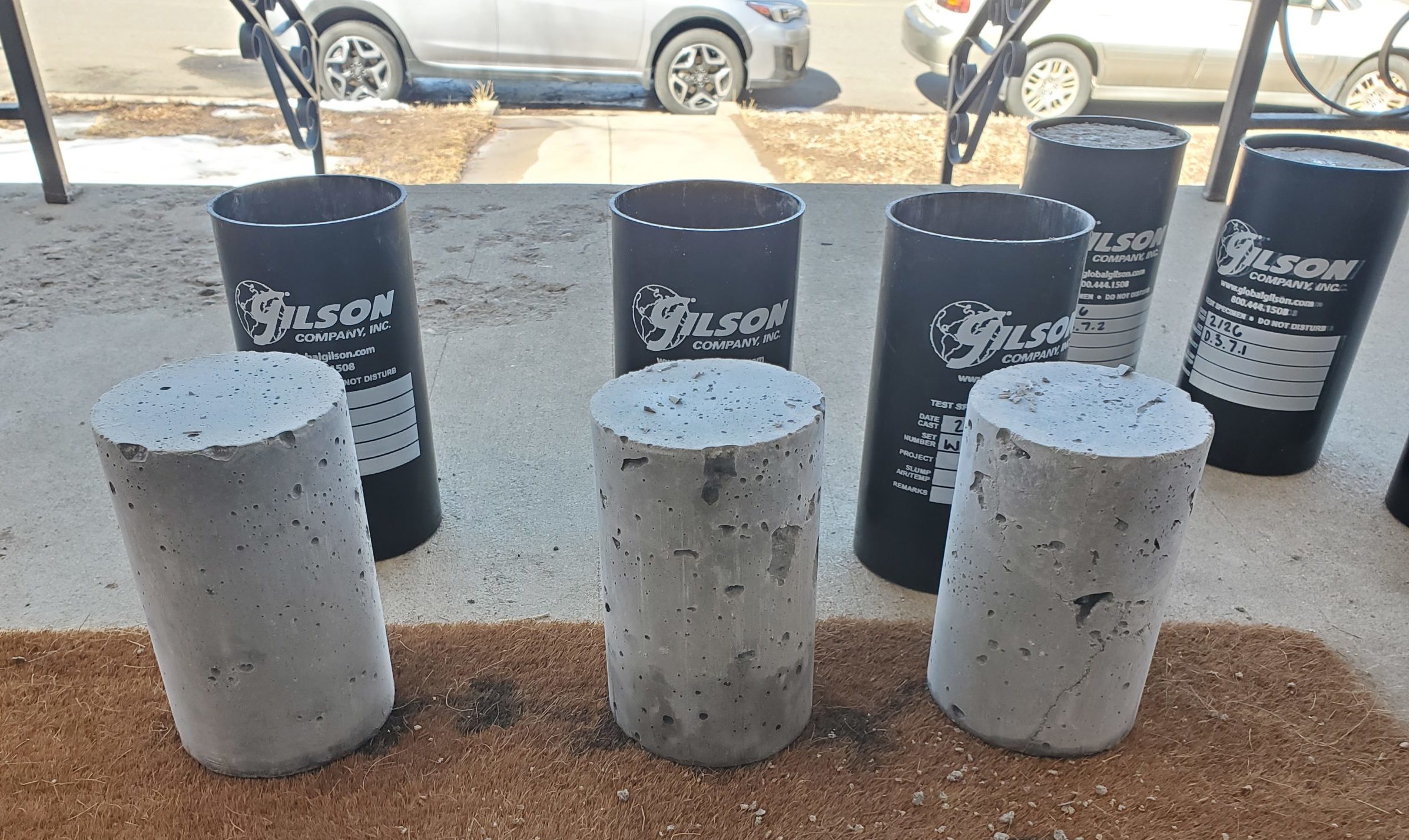
High-Level Requirements
High-level requirements include type of tailings, strength of concrete samples, and plant growth success.
- Type of tailings: both wet and dry tailings are acceptable, but the use of wet tailings is preferred because it avoids the process of dewatering
- Strength: Concrete should ideally meet compressive strength standards for structural applications, but aesthetic applications can be explored if structural standards are not met.
- Plant Growth: plants must grow in the presence of tailings (proof of concept test)
- Hazard Criteria: both ideas are considered low-risk in the following categories:
- Health and Safety
- Public Relations
- Environmental Impacts
- Financial Impacts
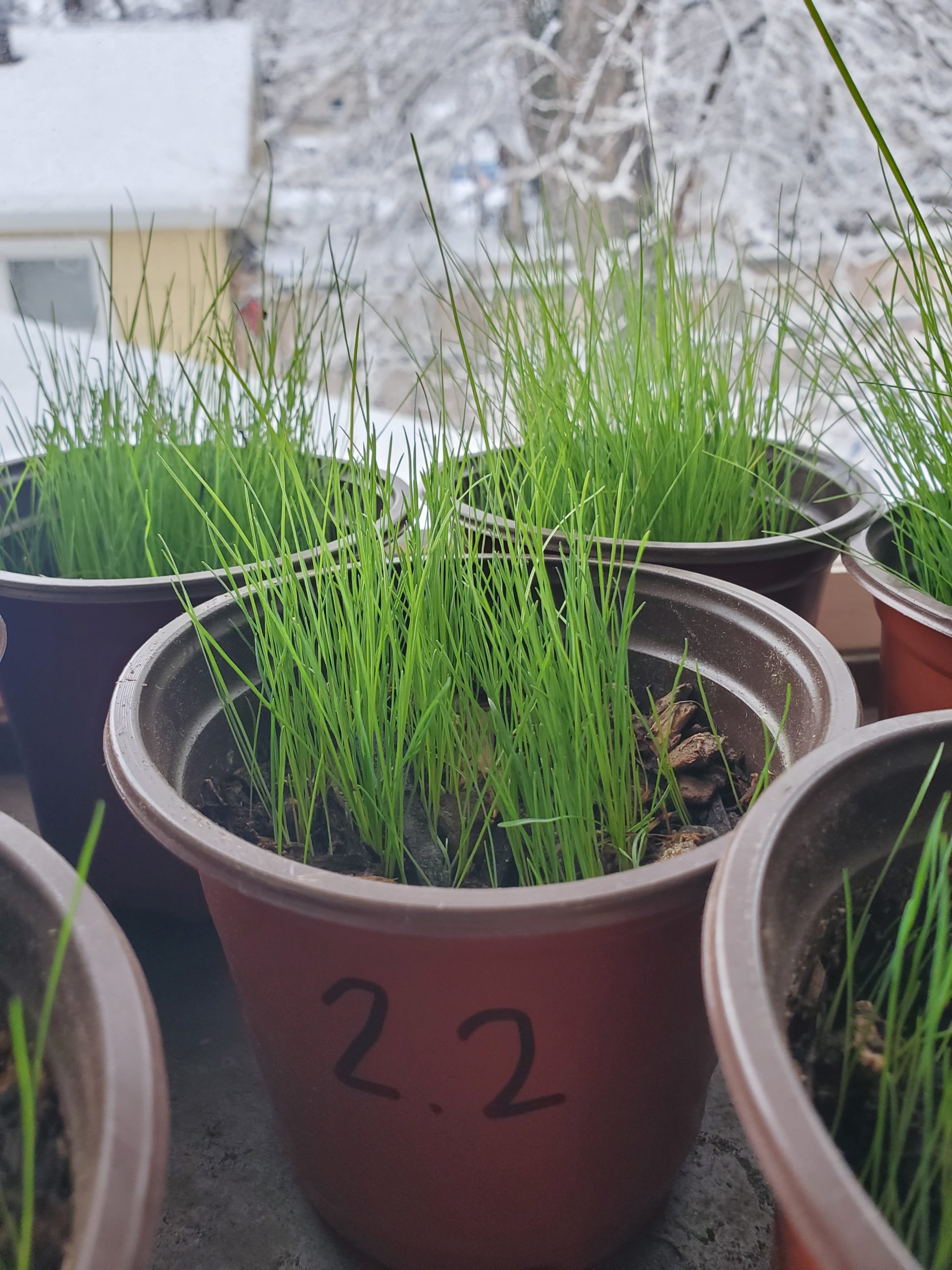
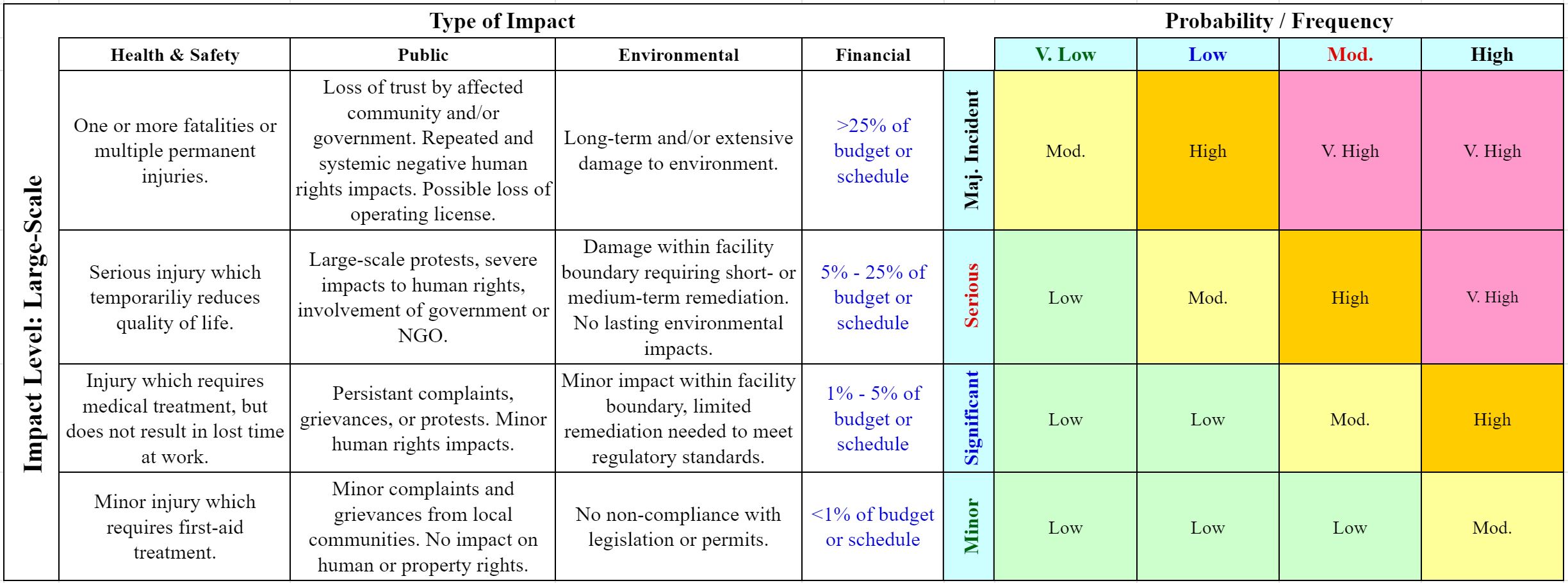
A risk matrix was developed for large-scale operations for concrete and fertilizer. initial ratings (shown below) were moderate and high risk for large-scale concrete and fertilizer operations, but these ratings did not include any controls to minimize risk. Risk reduction was required by the client, so the team discussed various controls that could reduce risk in large-scale operations. With controls, the team believes that full scale risks could be minimized to the lowest risk in all categories. Final ratings are also shown below.
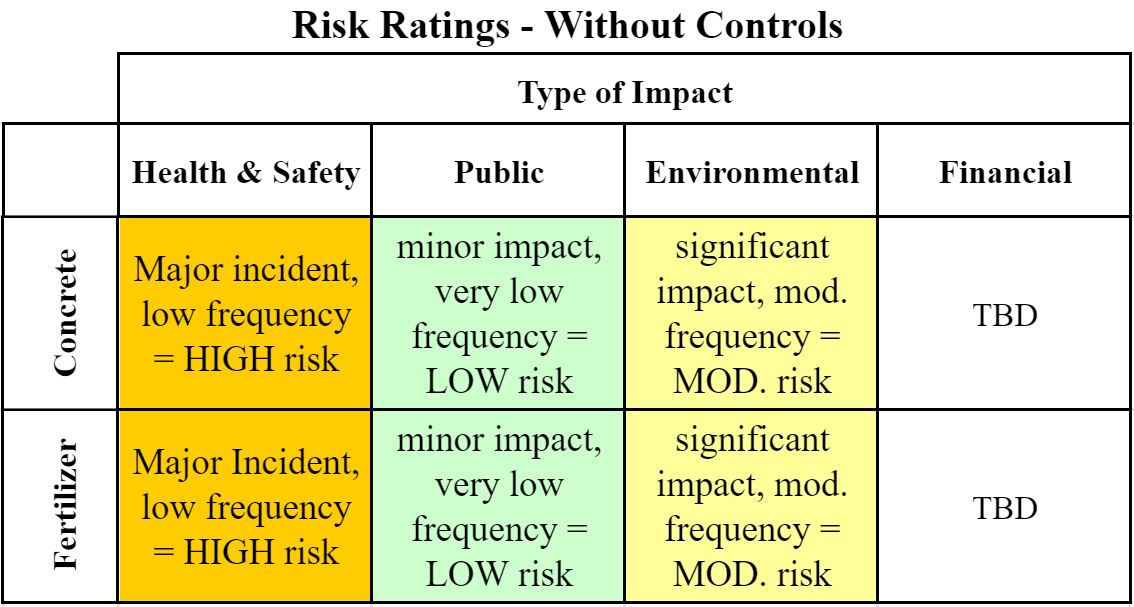
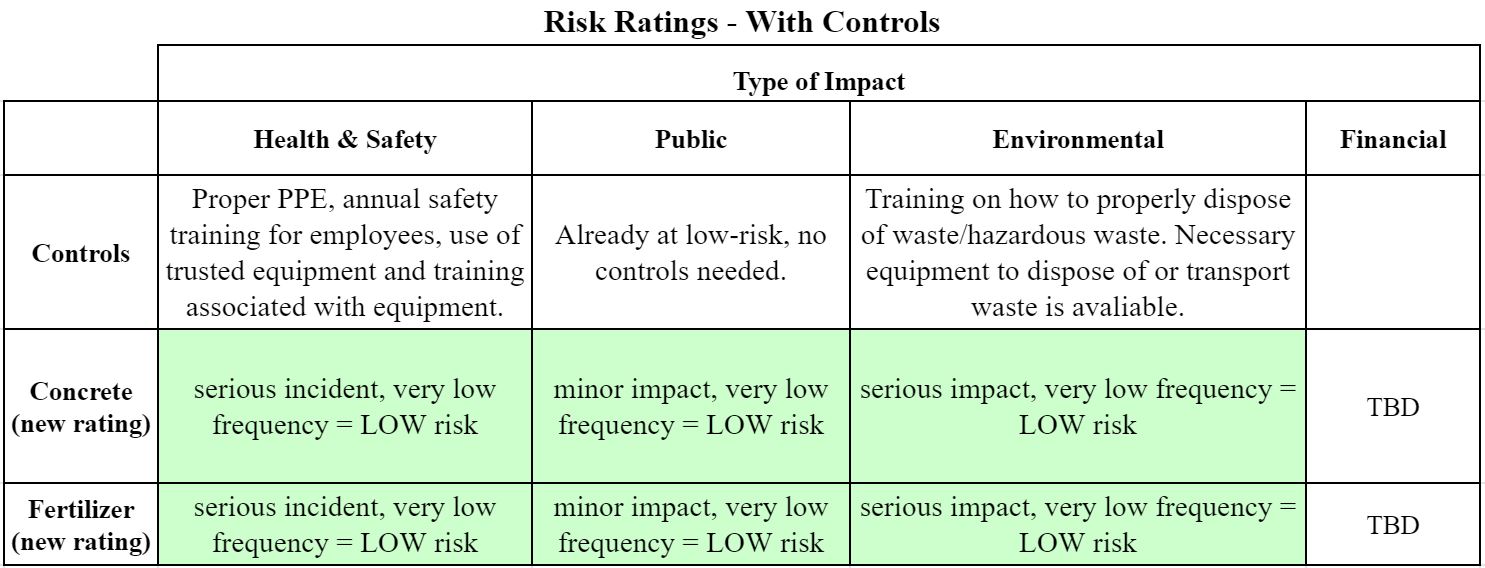
Testing Process
Two methods of reusing mine tailings were designed and tested: tailings in concrete and tailings in fertilizer. Dry and wet tailings were used to make 7 concrete samples and these samples underwent 7, 14, and 21-day compressive strength tests. Dry and wet tailings were mixed with soil and seeds, and watered regularly over the course of the testing period. Over the course of seven weeks, soil samples were observed for signs of plant growth.
An Inductively Coupled Plasma (ICP) analysis was performed on both the tailings themselves and the concrete sample that contained 17% wet tailings. The analysis with the pure tailings included testing samples from two mine sites and topsoil (the control). ICP tests were conducted to understand the composition of metals in tailings. The concrete mix was tested to observe the composition of metals in concrete in comparison to the tailings results. This was one step towards understanding the implications of using tailings in concrete.
Design Solution
Two concrete mixes look promising after initial tests: 20% and 17% wet tailings mixes. The concrete samples with 20% wet tailings had an average psi over 2500 psi and this mix was concluded to be the best option. While the compressive strength was a little lower than the 17% wet tailings mix, less sand and a higher percentage of tailings were used so the 20% wet tailings mix appears to be the most cost effective option. Plant growth was observed in all samples. Soil mixes contained 2-3% tailings and given the success, this concentration of tailings was not high enough to prevent plant growth. Future tests could help determine the concentration at which plant growth is inhibited.
The ICP testing results revealed information about the composition of the tailings which can create a better understanding of the chemical fate and transport of tailings metals in concrete or fertilizer. Based on our research, iron, copper, magnesium, manganese, and zinc concentrations within tailings are beneficial as a fertilizer. However, selenium, arsenic, and chromium could be a problem in the implementation phase of the fertilizer. The only metal of concern within the concrete mixture tested was arsenic.
Value Sought and Value Created
Tailings pose a substantial problem for mining companies (and the greater public). Permits become less likely to succeed when tailings impoundments are part of the design. There are high costs associated with long term management and there is always a risk of impoundment failures. Determining ways to reuse tailings would reduce the cost and risk of managing tailings. If a product is able to be created that can decrease the amount of tailings that have to be managed, but also can add another source of income, it would be very beneficial for Nevada Gold Mines. Not only would the product add another source of income, but it would decrease the large amount of money that is spent managing the tailings as they sit and take up space at the mine site, or wherever they may be.
The proposed solutions of incorporating tailings into concrete and fertilizer are two methods to help with the problem. Tailings in concrete is particularly valuable because it could play a role in reducing the carbon footprint of concrete as a material. Cement, a critical component of concrete, is responsible for almost 10% of carbon dioxide emissions [1] and the manufacturing of cement produces about 0.9 pounds of CO2 for every pound of cement [2]. Reducing the need for cement while creating an alternative use for tailings would have positive impacts on the environment, mining facilities, and the general public, all of which provide reason to continue evaluating concrete as a feasible solution.
Overall, both solutions have passed initial “proof of concept” tests. The team recommends further pursuing concrete and fertilizer as methods to reuse mine tailings because of their potential for generating value. The next section will discuss some ideas for future work.
[1] L. Rodgers, “Climate change: The massive CO2 emitter you may not know about,” News, 17-Dec-2018. [Online]. Available: https://www.bbc.com/news/science-environment-46455844. [Accessed: 09-Apr-2021].
[2] “Carbon Footprint,” think harder.concrete. [Online]. Available: https://www.cement.org/docs/default-source/th-paving-pdfs/sustainability/carbon-foot-print.pdf?sfvrsn=2&sfvrsn=2#:~:text=The%20manufacture%20of%20cement%20produces,about%20400%20lbs%20of%20CO2. [Accessed: 09-Apr-2021].
Next Steps
Three main perspectives could be further defined in the next semester: cost, chemistry, and regulatory. A better understanding of fertilizer and concrete applications would yield a more detailed cost estimate. More knowledge on potential leaching or metal uptake in plants would improve understanding of the chemistry for each idea. Lastly, regulatory standards (either internal or federal) could be further studied once location and type of application are better understood.
While any of the perspectives could be explored, the team recommends focusing on two aspects:
- Understanding the chemical fate and transport of metals for each idea
- Quantifying the potential reduction in carbon dioxide (CO2) emissions by using tailings in concrete
In regard to chemistry, determining the stability of metals in concrete and the concentration of metals in vegetation would be an important next step in a feasibility analysis due to environmental health and safety reasons. If metals were found to leach out of concrete or if metal uptake in vegetation presented too high of a risk, then each idea would need to be re-evaluated for safety and general feasibility. In regard to reducing CO2 emissions, the client expressed interest in this potential benefit so the team would advise future research into CO2 emissions of concrete. Overall, concrete and fertilizer appear to offer good alternatives to traditional tailings management and future semesters should continue to pursue both ideas.

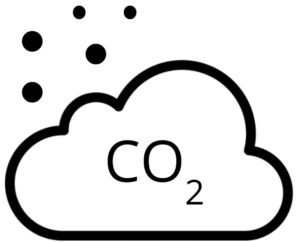
Meet the Team
Zach Archibald
 Zach is an Environmental Engineering student graduating in May 2021. His engineering interests include site remediation, hydrology, and water quality consulting. He has worked with Pioneer Technical Services, an environmental and civil engineering consulting firm in Butte, MT, the past three summers working on a variety of different projects. Surveying, material testing, surface and subsurface sampling, well development, and piezometers installation are some of the experiences that he has gained working for Pioneer the last few years. Zach is a member of the Mines me Save n’s soccer team and enjoys skiing, basketball, and wake surfing outside of his studies.
Zach is an Environmental Engineering student graduating in May 2021. His engineering interests include site remediation, hydrology, and water quality consulting. He has worked with Pioneer Technical Services, an environmental and civil engineering consulting firm in Butte, MT, the past three summers working on a variety of different projects. Surveying, material testing, surface and subsurface sampling, well development, and piezometers installation are some of the experiences that he has gained working for Pioneer the last few years. Zach is a member of the Mines me Save n’s soccer team and enjoys skiing, basketball, and wake surfing outside of his studies.
Jessica DiCaprio
 Jessica is studying environmental engineering and will be graduating in May 2021. She is also earning a minor in public affairs through the McBride Honors Program. Her professional interests include hydrology, water resources and management, environmental justice, and environmental chemistry. She has project experience with water quality consulting and sustainability assessments. In her free time, Jessica enjoys trail running, skiing, hiking 14ers, and nature photography.
Jessica is studying environmental engineering and will be graduating in May 2021. She is also earning a minor in public affairs through the McBride Honors Program. Her professional interests include hydrology, water resources and management, environmental justice, and environmental chemistry. She has project experience with water quality consulting and sustainability assessments. In her free time, Jessica enjoys trail running, skiing, hiking 14ers, and nature photography.
Wyatt Ellison
 Wyatt is an Environmental Engineering student with a minor in Engineering for Community Development graduating in May 2021. His engineering interests include sustainable design, environmental justice, and water quality consulting. His most recent project experience was working in collaboration with graduate students and professors from different universities on a National Science Foundation funded project looking at improving the water treatment process for artisanal and small-scale gold miners in Andes, Colombia. Outside of school, Wyatt enjoys running, basketball, soccer, and cooking.
Wyatt is an Environmental Engineering student with a minor in Engineering for Community Development graduating in May 2021. His engineering interests include sustainable design, environmental justice, and water quality consulting. His most recent project experience was working in collaboration with graduate students and professors from different universities on a National Science Foundation funded project looking at improving the water treatment process for artisanal and small-scale gold miners in Andes, Colombia. Outside of school, Wyatt enjoys running, basketball, soccer, and cooking.
Abdulla Ermila
 Abdulla is studying civil engineering and will graduate Fall of 2021. He loves the construction aspect of civil engineering and seeing projects come to life. Going forward, he hopes to be apart of huge construction projects and is excited to see what the future holds.
Abdulla is studying civil engineering and will graduate Fall of 2021. He loves the construction aspect of civil engineering and seeing projects come to life. Going forward, he hopes to be apart of huge construction projects and is excited to see what the future holds.
Ashley Grob
 Ashley is a Civil Engineering student with plans to pursue underground tunneling upon graduation. She has previous experience working for a tunneling company in San Diego, CA. In her Civil Materials class she worked on a project to test the plausibility of replacing the fine aggregates of concrete with tailings to understand how the compressive strength is affected. Outside of school she enjoys painting, camping, and spending time with friends and family.
Ashley is a Civil Engineering student with plans to pursue underground tunneling upon graduation. She has previous experience working for a tunneling company in San Diego, CA. In her Civil Materials class she worked on a project to test the plausibility of replacing the fine aggregates of concrete with tailings to understand how the compressive strength is affected. Outside of school she enjoys painting, camping, and spending time with friends and family.

